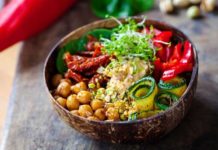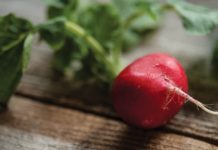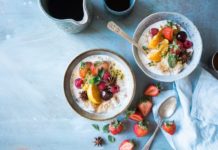
We all adhere to the motto “the fresher, the better” when it comes to the fruits, vegetables, or cooking herbs we choose at our local grocery or natural health food shop. They smell better, and they taste better; and most importantly their level of freshness can impact their nutritional benefits.
The same applies to the plants that are used in herbal remedies we consume to prevent or treat illnesses.
Freshness theory takes root
Though fresh herbals were commonly dried before employing their medicinal qualities, pioneers in the natural health industry were convinced they could find a better way to elicit more of the power of these natural medicinal wonders.
Through experimentation and observation, these early researchers were convinced that herbal products prepared with fresh herbs, as opposed to dried plants, reacted at a deeper level and that their overall range of action in the patient was greater.
Research shows “fresh” promise
Flash forwarding almost 100 years later, modern scientific methods and research have been employed to demonstrate these beliefs in the laboratory.
One particular study by researchers in Switzerland compared tinctures of both dried and fresh versions of seven different plants. Roughly 2 kg of freshly picked plants from the same harvest were divided into two equal parts.
One part was processed immediately, and the other was placed in a drying cabinet for 24 hours. The plants, which included echinacea, valerian, hawthorn, and yarrow, were chosen to provide an overview of different classes of active ingredients.
The results demonstrated that fresh plants often proved superior in terms of concentrations of active ingredients and also, in some cases, in terms of stability. During the drying process, ingredients such as volatile oils quickly disappeared and were therefore no longer available in the remedies made from dried herbs.
Another, more extensive, study comparing herbal remedies made with the same ratio of fresh versus dried echinacea revealed that the fresh extract product contained more active substances.
Further clinical trials also showed echinacea products made with fresh, organic herbs were effective and safe in respiratory tract infections for long-term and short-term prevention and treatment.
Freshness, quality … and responsibility
Of course, the quality of the herbs (fresh or dried) used in any tincture or herbal remedy also plays a major role in its effectiveness and should be considered at the time of any purchase. Look for organic preparations to avoid any unnecessary pesticide or insecticide residues along with companies that invest in sustainable farming practices—taking into account the needs of the local population as well as optimum protection and sustainable use of natural resources.
Krista Halton has worked in the health industry for more than 12 years. Her wealth of knowledge and passion for the industry are what drive her to educate Canadians on natural alternatives for healing.






























